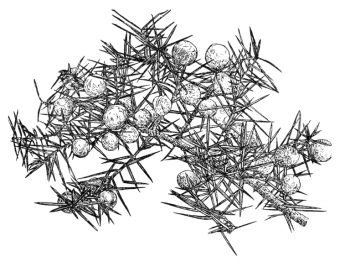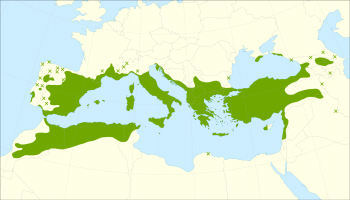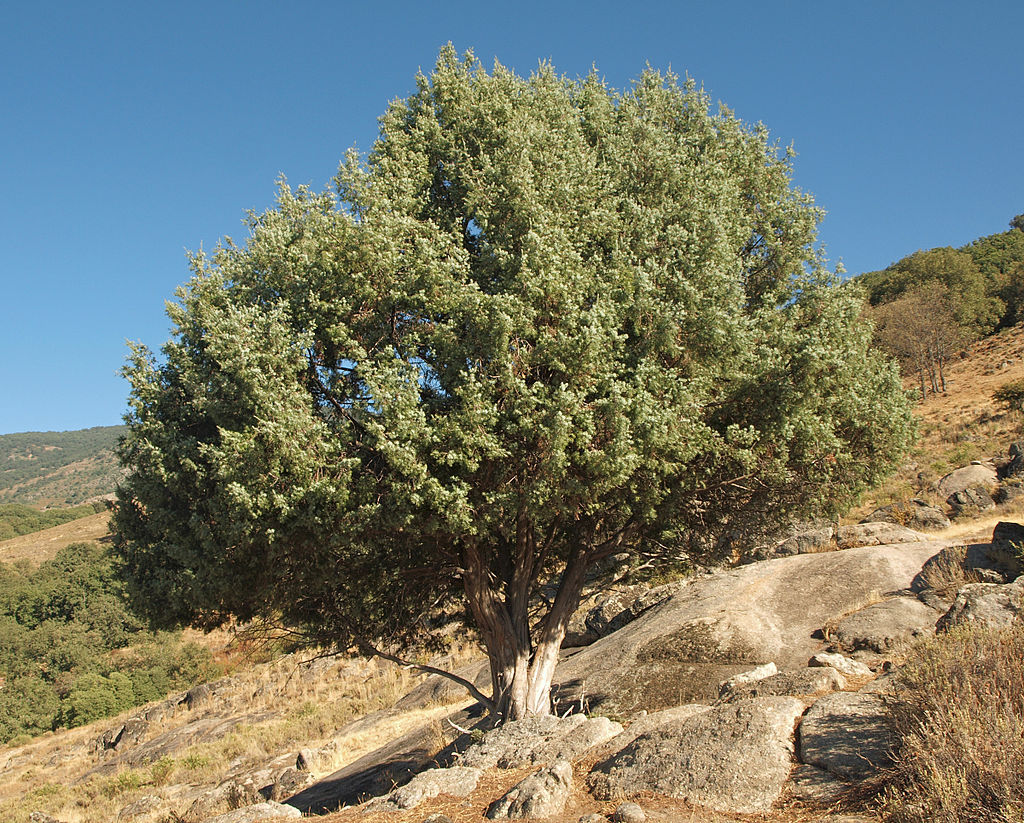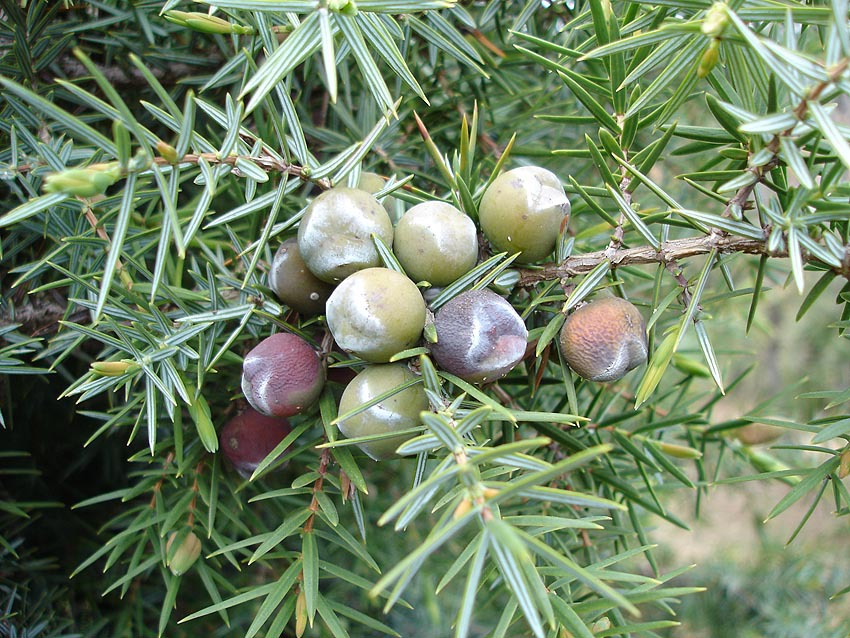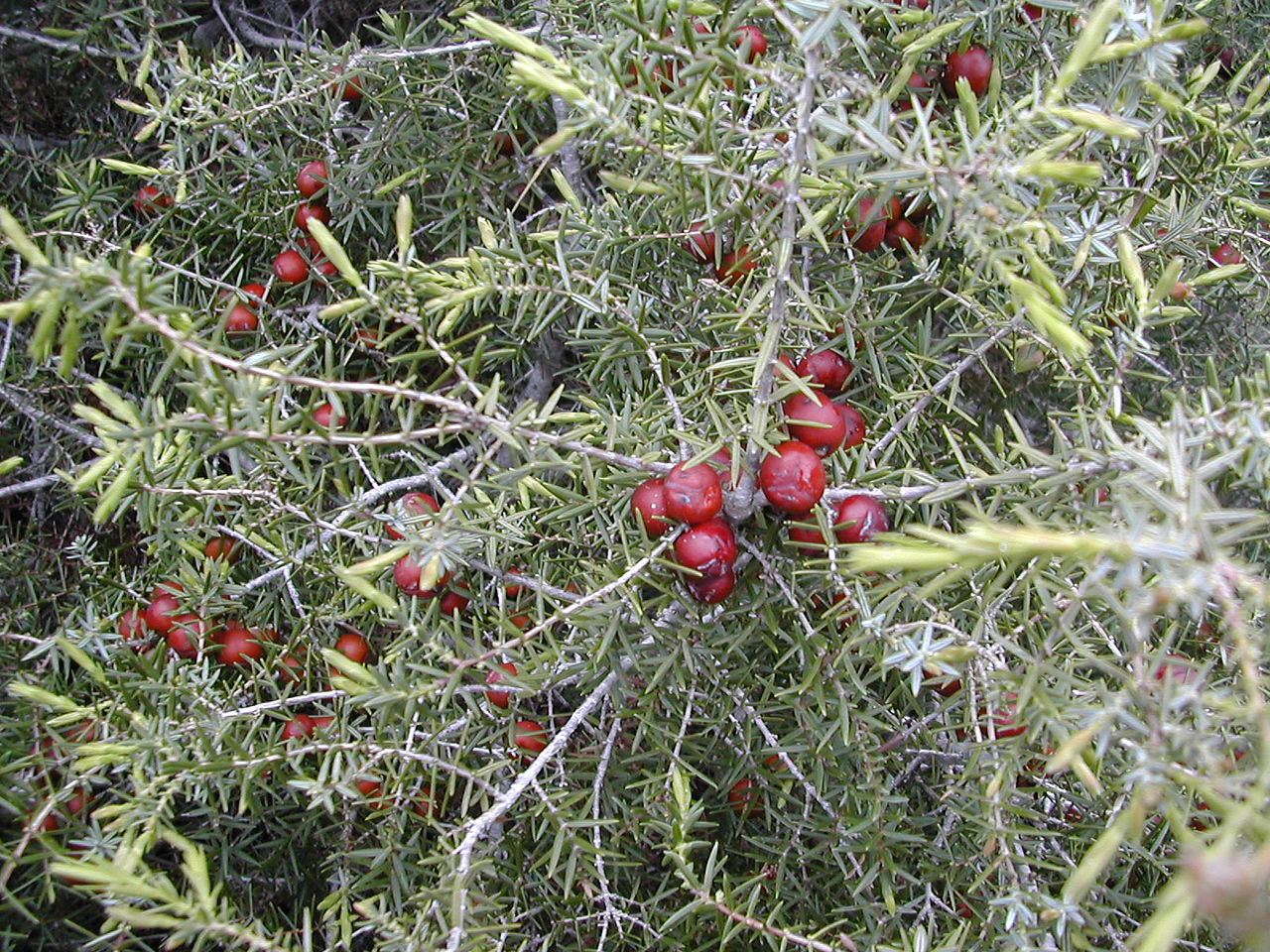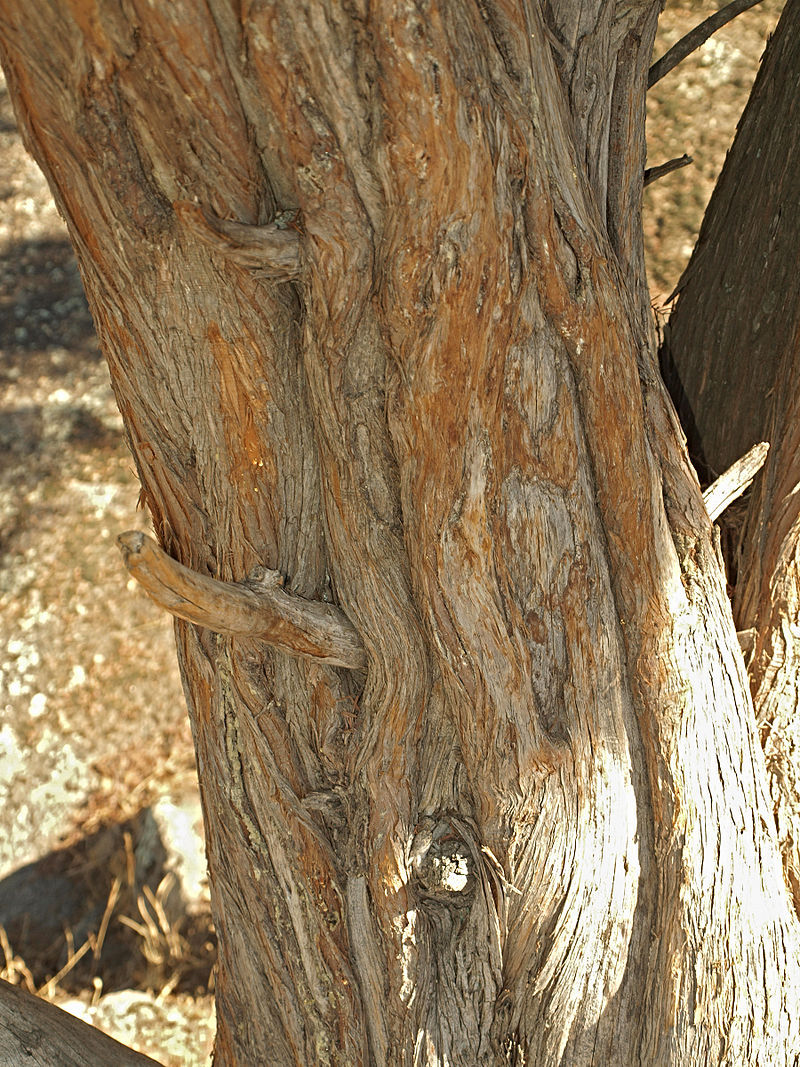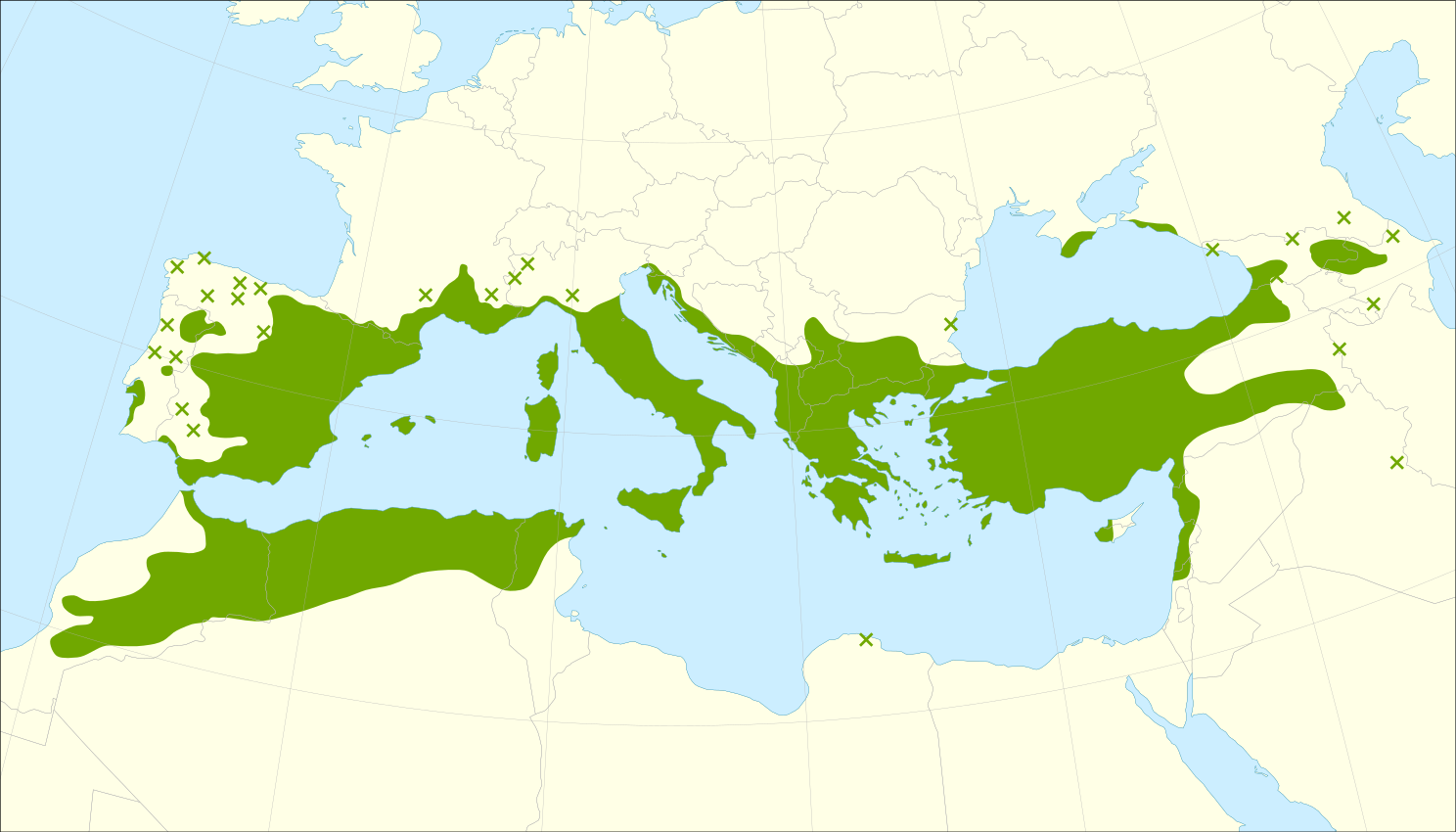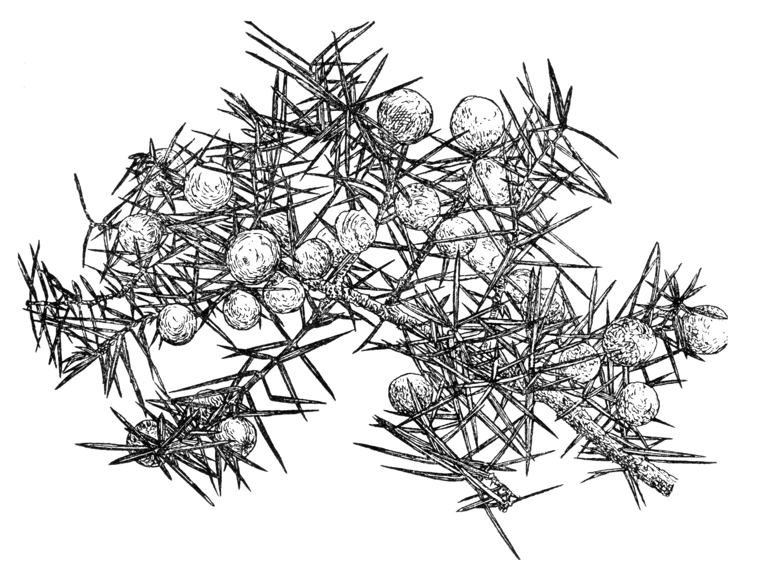Juniperus oxycedrus, as described in in 1753 by Carolus Linnaeus (1707-1778), in Species Plantarum, 2nd edition, is commonly called Prickly juniper, Prickly cedar, Cade juniper and Cade (from the French genévrier cade), or Sharp cedar; as well as Crvena kleka in the Serbian language; zeder wacholder in German; genévrier cade, or cedre piquant in French; or ginepro pungente in Italian. The extremely prickly foliage is the origin of the species name, Latin for "sharp cedar." This species may have been the original cedar or cedrus of the ancient Greeks.
There are four accepted subspecies:
- Juniperus oxycedrus subsp. badia (H. Gay) Bebeaux 1894
- Juniperus oxycedrus subsp. macrocarpa (Sibth. et Sm.) Ball 1878
- Juniperus oxycedrus subsp. oxycedrus
- Juniperus oxycedrus subsp. transtagana Franco 1963
Of these, subsp.
badia, which has also been described as var.
badia as well as f.
pendula, appears to have been described on the basis of a single tree and has not since been collected, although it has been reported in Portugal and central Spain. Subspecies
macrocarpa is widespread on the eastern Mediterreanean and Black Sea coasts, while subspecies
oxycedrus has a larger (but partially sympatric) range but in inland settings. Subspecies transtagana is questionably distinct from subsp. oxycedrus, confined to Portugal and southwestern Spain.
Closely related species of Juniperus oxycedrus include Juniperus brevifolia of the Azores, Juniperus cedrus of the Canary Islands and Juniperus formosana of east Asia.
Ethnobotany. Cade oil is the essential oil obtained through destructive distillation of the wood of this shrub. It is a dark, aromatic oil with a strong smoky smell which is used in some cosmetics and (traditional) skin treatment drugs, as well as incense.
Description. Prickly juniper is very variable in shape, forming a spreading shrub 6 to 10 feet (2 - 3 m) tall to a small erect tree 35 to 50 feet (10 - 15 m) tall, with a bushy, irregular crown; and spreading to stiffly upright branches, with dropping tips. This species is usually dioecious, with separate male and female plants.
- Bark is thin and light-gray in color, peeling in longitudinal strips.
- Leaves are needle-like, growing in whorls of three. They are green in color, measuring 0.2 to 0.8 inch (5 - 20 mm) long and 0.04 to 0.08 inch (1 - 2 mm) broad, with a double white stomatal band (split by a green midrib) on the inner surface.
- Pollen cones are borne singly on very short stalks in the leaf axils. They are yellow in color, with an obovate shape, measuring 0.04 to 0.08 inch (1 - 2 mm) with 4 to 8 alternating trios of pollen scales. They are shed shortly releasing pollen in late winter/early spring.
- Seed cones are berry-like, colored green when young, ripening 18 months after pollination to orange-red with a variable pink waxy coating. They are spherical, measuring 0.28 to 0.48 inch (7 - 12 mm) diameter, and have three or six fused scales in 1-2 whorls, three of which bearing a single seed.
- Seeds are dispersed when birds eat the cones, digesting the fleshy scales and passing the hard seeds in their droppings. They are brown in color, measuring 0.2 to 0.48 inch (5 - 12 mm) long.
Distribution. this species of juniper is native across the Mediterranean region from Morocco and Portugal, north to southern France, east to westernmost Iran, and south to Lebanon and Israel, growing on a variety of rocky sites from sea level up to 5,000 feet (1,600 m) altitude.
Hardy to USDA Zone 9 - cold hardiness limit between 20° and 30°F (-6.6° and -1.1°C).
